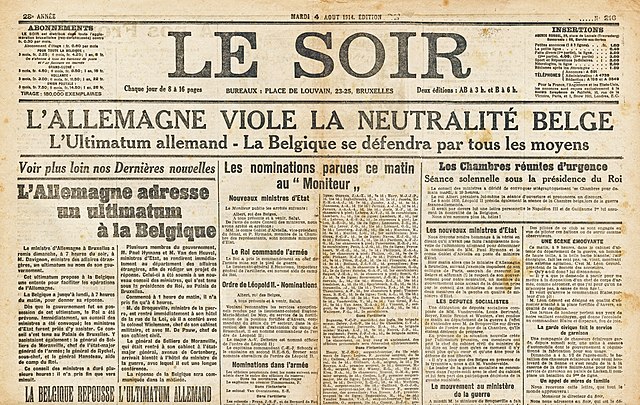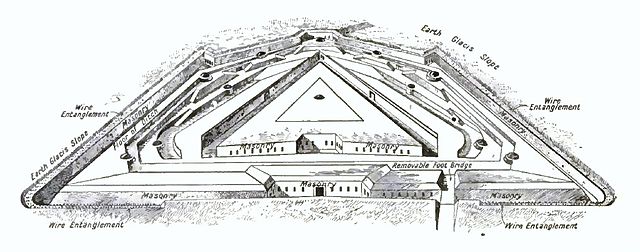The Battle of Liège [also French: Bataille de Liège] was the opening engagement of the German invasion of Belgium and the first battle of the First World War. The city of Liège was protected by a ring of modern fortresses to form the Fortified position of Liège, one of several fortified cities to delay an invasion to allow troops from the powers which had guaranteed Belgian neutrality to assist the Belgian Army in the expulsion of the invaders.
Belgian troops defending a suburb of Herstal, north-east of Liège.
Headline in Le Soir, 4 August 1914
Triangular Brialmont fort, 1914
Pentagonal Brialmont fort, 1914
German invasion of Belgium (1914)
The German invasion of Belgium was a military campaign which began on 4 August 1914. On 24 July, the Belgian government had announced that if war came it would uphold its neutrality. The Belgian government mobilised its armed forces on 31 July and a state of heightened alert was proclaimed in Germany. On 2 August, the German government sent an ultimatum to Belgium, demanding passage through the country and German forces invaded Luxembourg. Two days later, the Belgian government refused the German demands and the British government guaranteed military support to Belgium. The German government declared war on Belgium on 4 August; German troops crossed the border and began the Battle of Liège.
Albert I, King of the Belgians since 1909; Albert commanded the Belgian army in the First World War
"Germany Violates Belgian Neutrality": Headline in Le Soir, 4 August 1914
Fortified position of Liège
Contemporary Belgian depiction of the Battle of Halen







